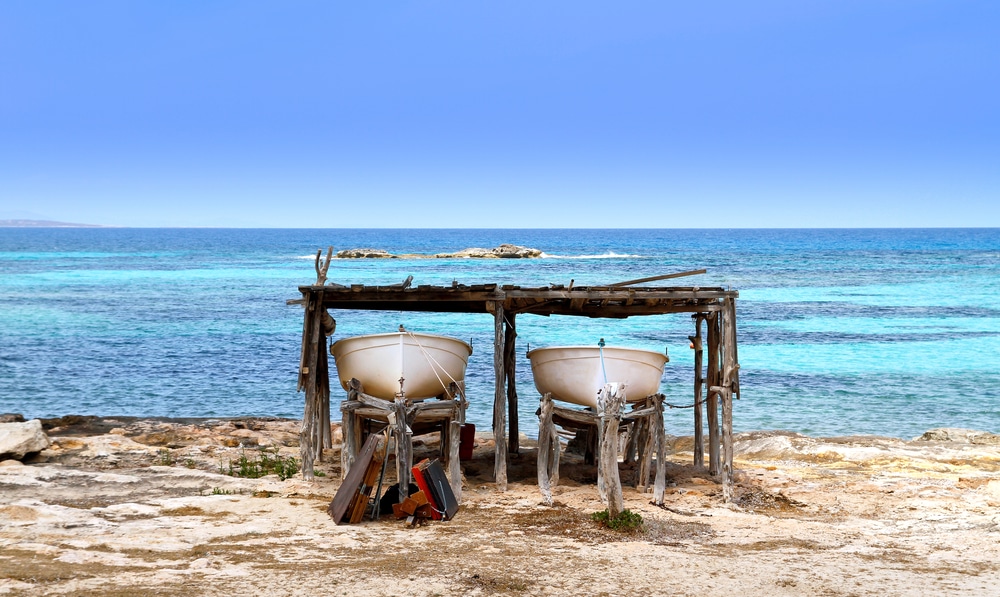Natural idyll
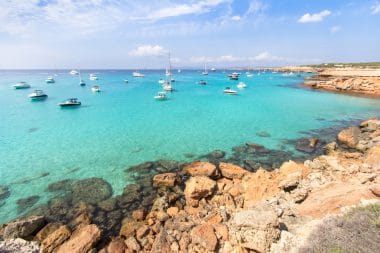
Only about 12,000 people live on the flat and tranquil island, which is located nine kilometers south of Ibiza. The landscape is dominated by pine and sade forests as well as extensive meadows and fields. Just as characteristic Mediterranean as the vegetation is the mild climate. But Formentera is also warmer and drier than the surrounding islands.
These conditions have led to the development of a fascinatingly diverse bird population, whose home is the almost untouched nature of large parts of Formentera. Responsible for the particularly clear water are posidonia meadows off the island. Thus, it is excellent for snorkeling and diving, but also other water sports.
The lively north of Formentera
Roughly speaking, Formentera can be divided into four parts roughly according to the cardinal directions. The most densely populated is the north, where both the main port and the main town are located. The former is La Savina. The ferries that go from there to Ibiza or the mainland are the only way to reach the island.
A crossing to Ibiza Town takes about 30-45 minutes. The main town of Sant Francesc Xavier, or Sant Francesc de Formentera, is more central. With about 3,000 inhabitants, it is the largest town and seat of the administration of the municipality. The landmark of the village is an old fortified church. Especially on the church square it is always lively, and music is often played here, as well as festivals or other events are celebrated. Many small shops in the surrounding streets invite you to go on a leisurely shopping spree.
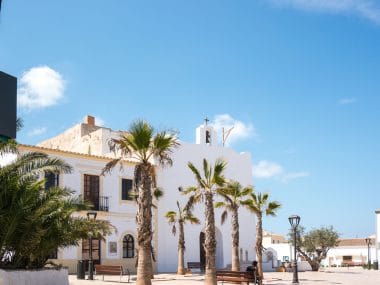
Also to the north is Es Pujols, a popular tourist resort that has adapted to it over time. In addition to hotels and apartments, there are numerous cafés and restaurants, bars and discos. The most famous beach in Formentera, the Platja de Ses Illetes, is located not far from Es Pujols in a north-westerly direction. It is part of a narrow headland that seems to consist entirely of light sand and stretches far to the north. If you prefer hiking to swimming, you should visit the two inland lakes between the port of La Savina and Es Pujols, where salt is extracted. The entire area, including the forests and beaches around the salt lakes, is highly recommended for tours by bike or on foot.
Peace and quiet away from the well-known holiday region
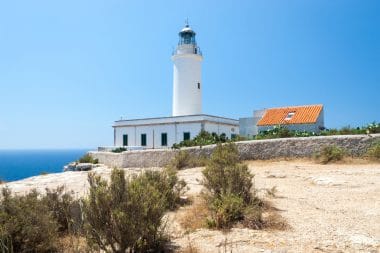
Rural and with only a few inhabitants, the south of Formentera has a decelerating atmosphere. Part of the south is even within a nature reserve. Cap de Barbaria is the southernmost area of the island. There you will find an old lighthouse that stands well above sea level on the rugged coast and offers an impressive view. The headland that forms the middle of the island is about six kilometers long.
There you will find some holiday resorts and the Platja de Mitjorn, the longest beach on the island. The La Mola plateau is located in the east of Formentera and can only be reached via a serpentine road or an old Roman road. In the middle of it lies the small town of El Pilar de la Mola, with which a very specific time can be associated. In the 1960s and 1970s, Formentera was a popular destination for hippies.
Bob Dylan is even said to have lived in a former mill on La Mola for a few months. The craft market, which is often referred to as the hippie market, still takes place every Wednesday and Friday in El Pilar de la Mola. At the easternmost point of La Mola there is another old lighthouse, from which you can enjoy a magnificent view of the sea and the rocky coast, just like at Cap de Barbaria.
Formentera – Fascinating historical heritage
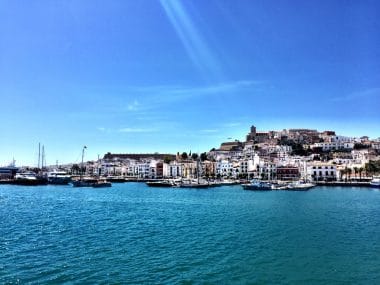
History buffs will also get their money’s worth on a holiday in Formentera. The island was inhabited thousands of years before our time. Of the many megalithic sites that can be found, for example, at Cap de Barbaria or in the Cova des Fum cave, the dolmen of Ca na Costa, located between Lake Estany Pudent and Es Pujols, is the most important, as it documented a settlement in Formentera over 4000 years ago.
An absolute recommendation
While mass tourism has taken away much of the originality of other Balearic islands, Formentera has managed to preserve much of it. Although you have to expect that most hotels and holiday resorts are fully booked in the summer months, these are still manageable in number and are concentrated in certain regions. As a result, Formentera offers both action and fun as well as peace and relaxation.
A last special feature worth mentioning is the traditional viticulture, which is one of the most important agricultural sectors on the island. The wine is not only grown in Formentera, but also bottled and distributed exclusively on site. Tasting it or even attending the annual farmers’ competition for the best wine is a unique highlight for connoisseurs and enthusiasts.


